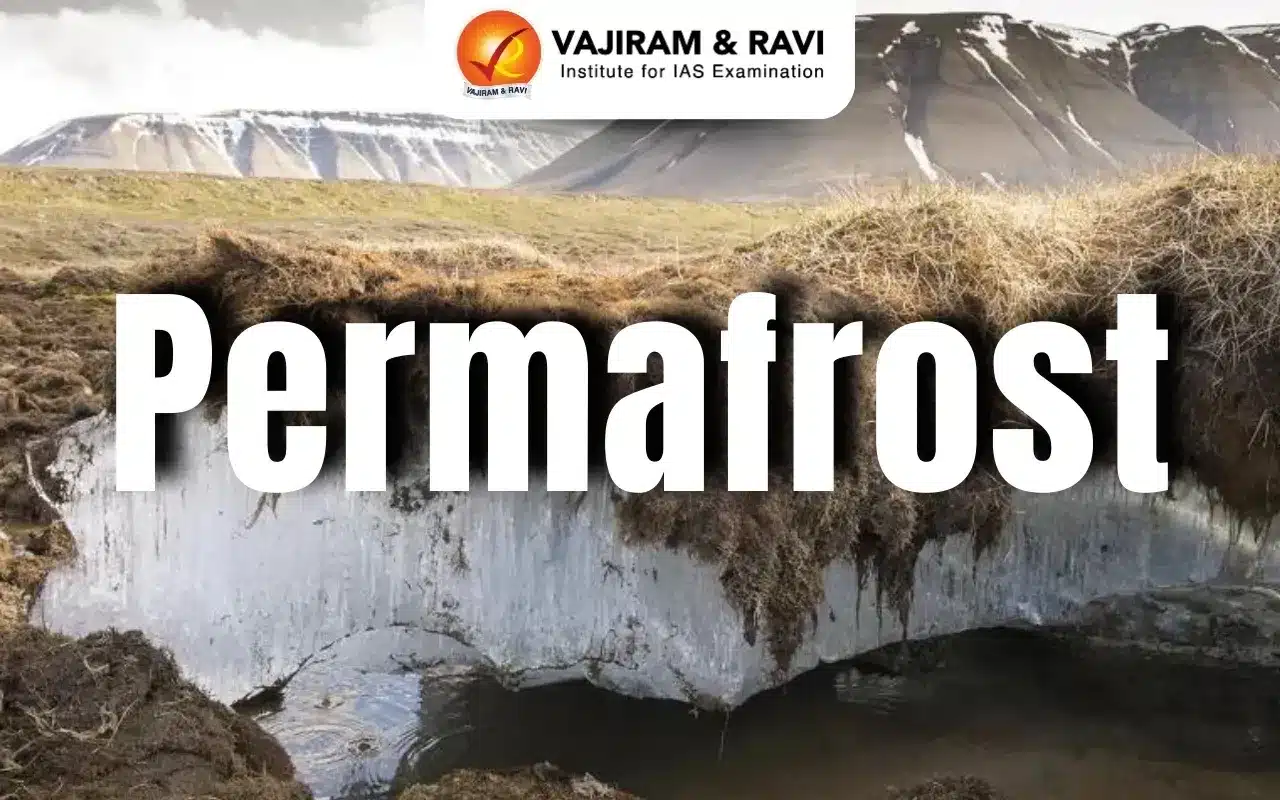Permafrost Latest News
According to a new study, permafrost covers 64.8% of the total area of J & K and Ladakh.
About Permafrost
- Permafrost is any ground that remains completely frozen—32°F (0°C) or colder—for at least two years straight.
- Where are they found?
- These permanently frozen grounds are most common in regions with high mountains and in Earth’s higher latitudes—near the North and South Poles.
- They can be found on land and below the ocean floor.
- It can extend down beneath the earth’s surface from a few feet to more than a mile, covering entire regions, such as the Arctic tundra, or a single, isolated spot, such as a mountaintop of alpine permafrost.
- Permafrost coverslarge regions of the Earth. Almost a quarter of the land area in the Northern Hemisphere has permafrost underneath.
- What Is Permafrost Made Of?
- Permafrost is made of a combination of soil, rocks and sand that are held together by ice.
- The soil and ice in permafrost stay frozen all year long.
- Although the ground is frozen, permafrost regions are not always covered in snow.
- Near the surface, permafrost soils also contain large quantities of organic carbon—a material leftover from dead plants that couldn’t decompose, or rot away, due to the cold.
- Lower permafrost layers contain soils made mostly of minerals.
- A layer of soil on top of permafrost does not stay frozen all year. This layer, called the active layer,thaws during the warm summer months and freezes again in the fall.
- In colder regions, the ground rarely thaws—even in the summer. There, the active layer is very thin—only 4 to 6 inches (10 to 15 centimeters). In warmer permafrost regions, the active layer can be several meters thick.
Permafrost FAQs
Q1. What country has the most permafrost?
Ans. The country with the most permafrost is Russia.
Q2. What is permafrost primarily made of?
Ans. A combination of soil, rocks, sand, and ice.
Q3. What is a major component found in the upper layers of permafrost?
Ans. Organic carbon from dead plants.
Source: TH
Last updated on July, 2025
→ UPSC Notification 2025 was released on 22nd January 2025.
→ UPSC Prelims Result 2025 is out now for the CSE held on 25 May 2025.
→ UPSC Prelims Question Paper 2025 and Unofficial Prelims Answer Key 2025 are available now.
→ UPSC Calendar 2026 is released on 15th May, 2025.
→ The UPSC Vacancy 2025 were released 1129, out of which 979 were for UPSC CSE and remaining 150 are for UPSC IFoS.
→ UPSC Mains 2025 will be conducted on 22nd August 2025.
→ UPSC Prelims 2026 will be conducted on 24th May, 2026 & UPSC Mains 2026 will be conducted on 21st August 2026.
→ The UPSC Selection Process is of 3 stages-Prelims, Mains and Interview.
→ UPSC Result 2024 is released with latest UPSC Marksheet 2024. Check Now!
→ UPSC Toppers List 2024 is released now. Shakti Dubey is UPSC AIR 1 2024 Topper.
→ Also check Best IAS Coaching in Delhi












